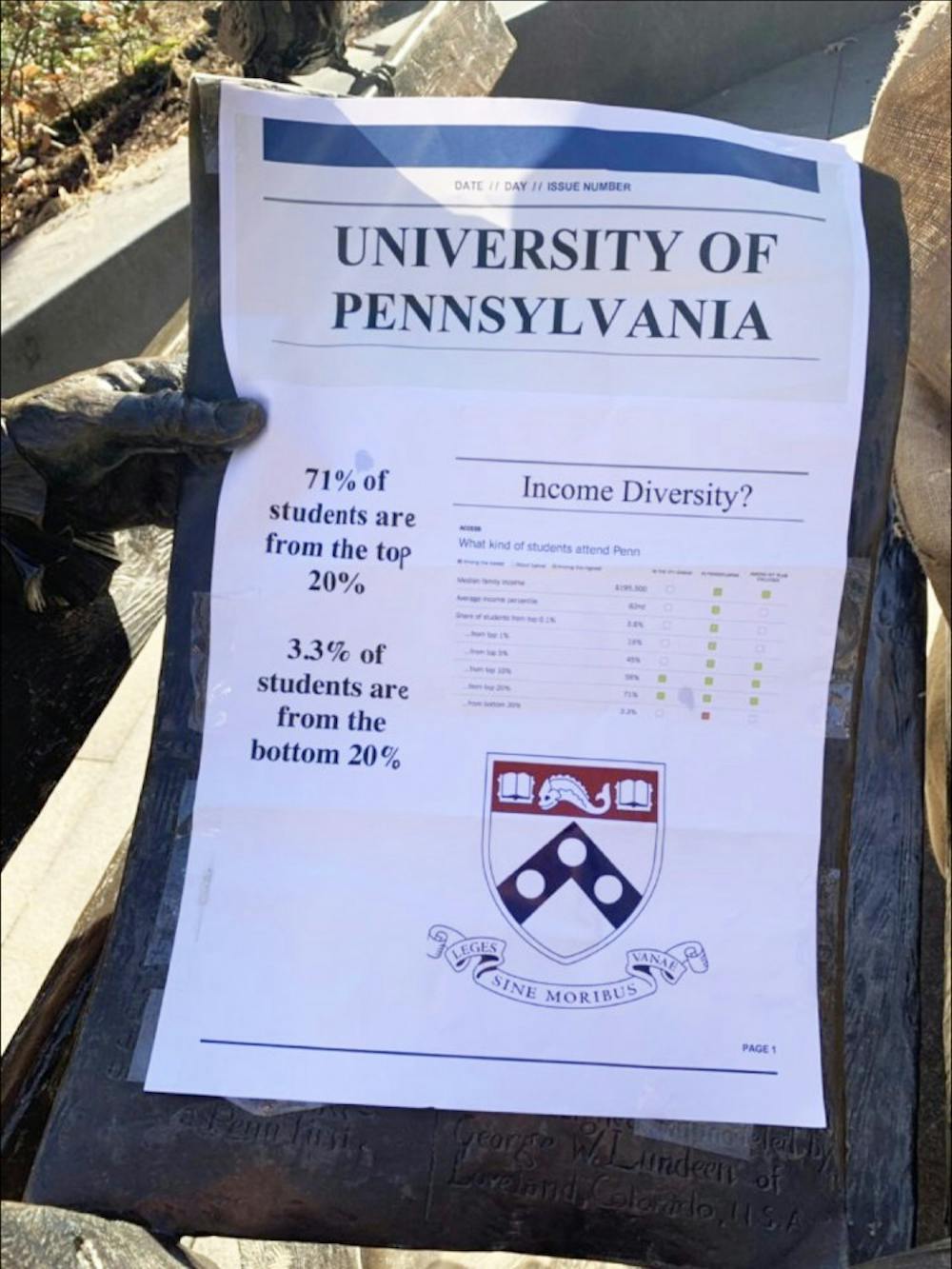
Several Penn students created an art installation aiming to highlight the lack of socioeconomic diversity at Penn. The installation, which was placed at the Ben Franklin bench, was later taken down the same day.
College sophomore Emily Yao, College senior Jake Mattis, and College sophomore Isabela Salas-Betsch placed a large bag overflowing with fake $100 bills on the Ben Franklin bench near the Compass on Dec. 4. The students also spray-painted each bill with the phrase “Admit One.” In Franklin’s hand, they placed a sheet of paper with socioeconomic statistics about Penn.
“71% of students are from the top 20%,” the paper read. “3.3% of students are from the bottom 20%.”
The installation was a final project for FNAR 264, Yao said, adding that the three members wanted to raise awareness that the majority of Penn students come from higher income brackets.
Yao said the group chose Franklin, the founder of the University, to represent the connection between Penn and money. They also printed the fake $100 bill with Franklin's face on them, mimicking real $100 bills. She added that the group painted “Admit One” on the bills to show that the students believe high socioeconomic status is a prerequisite to be accepted into Penn.
The students were near the installation at different points throughout the day to film reactions to their project. Mattis said they encountered security officers soon after they put up the installation around 10:30 a.m. Later in the day, someone who told Mattis he was a detective picked up the flyer the students placed in Franklin's hand “as evidence for a possible investigation into vandalism,” Mattis said.
The officer eventually gave the paper back to Mattis and told him the police were no longer going to deal with the issue.

Mattis agreed to take the installation down by 4 p.m. on Tuesday. When Mattis arrived around 4:30 p.m., however, the installation had already been taken down and none of their possessions were at the site.
Yao said most of the reactions from passersby were positive and some people approached her to ask about its message. Mattis said he was surprised with the amount of attention the installation received, including from tour groups. He added that many people took photos and videos of it.
“There was some negative reaction too, but I think even that was kind of cool,” Mattis said, “because it at least got people thinking about the topics that we were trying to bring awareness to.”
Yao said the installation was not meant to portray Penn negatively. She acknowledged that the installation was left open to interpretation, but she said it was “part of the beauty of doing an art installation instead of putting out stats.”
The group is currently trying to locate where the installation was taken.
“Right now, we’re trying to get in contact with whoever’s in charge of the facilities and find out where they took it because there’s some stuff inside of the bag that people want back,” Mattis said.
The Daily Pennsylvanian is an independent, student-run newspaper. Please consider making a donation to support the coverage that shapes the University. Your generosity ensures a future of strong journalism at Penn.
Donate







